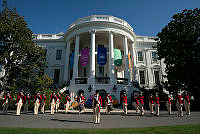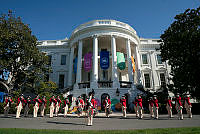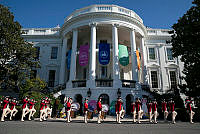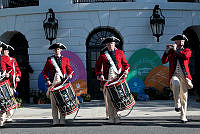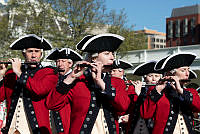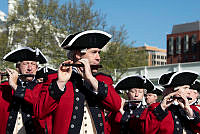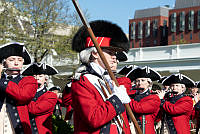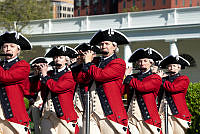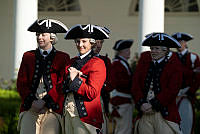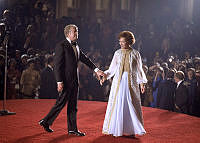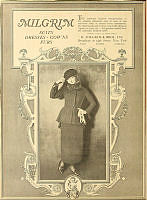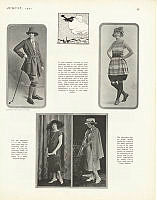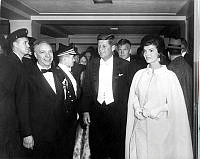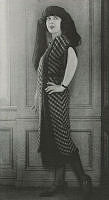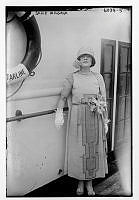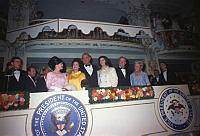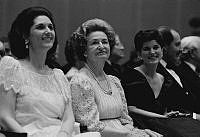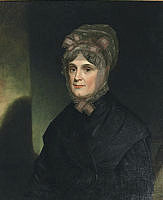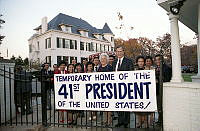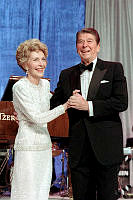The Building of the Inaugural Reviewing Stands 2009
Copyright © White House Historical Association. All rights reserved under international copyright conventions. No part of this article may be reproduced or utilized in any form or by any means, electronic or mechanical, including photocopying, recording, or by any information storage and retrieval system, without permission in writing from the publisher. Requests for reprint permissions should be addressed to books@whha.org
Little in Washington life excites locals more than the first sight of building spectator stands for the upcoming inauguration. The windows of the White House Historical Association look out over Lafayette Park and a hive of activity is underway in the weeks before President-elect Obama will take the oath. Not a leaf is on a tree to obscure a building site that approaches being monumental.
The custom has grown with time. Jefferson, the first president inaugurated in Washington, did not go directly to the White House but to his tavern. He supervised two full weeks of work on the house to make it ready for him. His successor, Madison, moved in with architect, paper hangers, and certain makers, to spruce the place up. For Andrew Jackson the north portico was still under construction. But it was Jackson’s that was the first of what might be called inaugural parades. The town had filled up, not a tavern or hotel room free in Washington, nearby Virginia or Maryland. Jackson intended to ride from the Capitol to the White House. So vast was the multitude that accompanied him that it took over an hour to make the trip. Nor did the crowd stop at the fence, but accompanied him right in and held so riotous a celebration that the president's friends slipped him out to a sanitary in a hotel.
After Jackson, the march to the White House became a tradition. The first time it was a big parade was for General William Henry Harrison, the first great American military hero since the Revolution, who was elected in the famous Log Cabin Campaign. Numerous log cabins were hauled around on wagons to publicize the candidate and some made it to the inauguration and were rolled down Pennsylvania Avenue. The Marine Band played. Twenty five years later, in June 1865, reviewing stands were built for the two-day Grand Review of the Armies of the Union, a review of the victorious armies before the president at the White House. It proved convenient and considering the ever-larger size of inaugural parades, such a stand was built for the inauguration parade of General Ulysses S. Grant.
The custom continued, the parades grew ever larger. By the turn of the twentieth century participants came from all over the country by train. At Theodore Roosevelt’s only inauguration parade, the Rough Riders came out full force, joined in the line by school bands, military companies, and such celebrities as Buffalo Bill. Reviewing stands became grander. Those in the 1920s looked like buildings in themselves, with enclosed areas just in case the winter weather was severe. For one of Franklin D. Roosevelt’s inaugurations a model of the Hermitage, Andrew Jackson’s home in Tennessee, faced the parade. General Eisenhower stood out from the stand and permitted a cowboy to lasso him. Kennedy’s review was in a very modern stand, enclosed for central heat and security, on one of the coldest days in inaugural history, if not the coldest, which were President Reagan’s second and the single one of William Howard Taft. Since the day President Reagan had to call off festivities because of the severe weather, inauguration days have been fair enough for a good time.
On inauguration day, the American people accompany their president to the house they have provided. Like so many ceremonies in the American culture, the inauguration parade grew from simple roots. It is no small matter today. Headed by a large committee, with extensive fund-raising activities, the two political parties start their work long before the election. Plans are laid. Designers engaged. Immediately after the election the surviving committee starts to work in earnest. Our system allows three months between the election and the inauguration. It is a very short time to bring to reality one of the most ambitious public events the nation holds.



